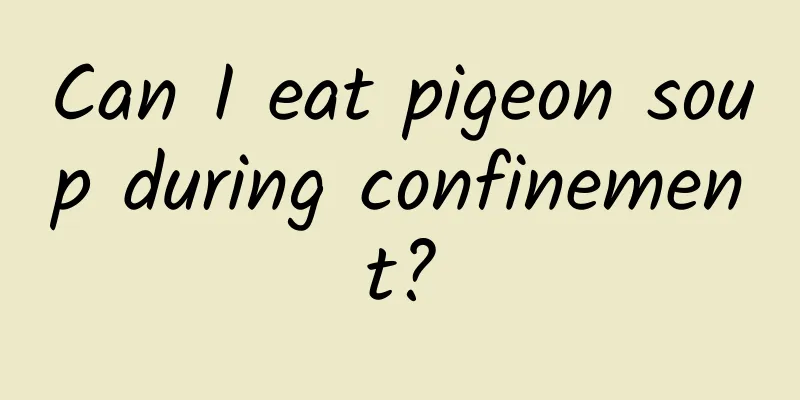Can cervical degeneration be cured?

|
Don't wait until your cervical spine degenerates before you think about protecting your cervical spine, because the cervical spine should be protected in the early stages of the disease, so as to effectively prevent the occurrence of cervical spine diseases. In fact, there are many ways to prevent cervical spondylosis. As long as you master these methods, you can effectively prevent cervical spondylosis. But if a person already has cervical spondylosis, can it be cured? There are several ways to maintain your cervical spine: 1. Correct sitting posture: To prevent the occurrence of cervical sub-health, the most important thing is to sit correctly, relax the neck and shoulders, and maintain the most comfortable and natural posture. Office workers should also stand up and walk around from time to time to move their neck and shoulders to relax the muscles in their neck and shoulders. 2. Move the neck: After working for about 1 to 2 hours, you should deliberately turn your head and neck forward, backward, left and right several times. The movement should be gentle and slow, so as to achieve the maximum range of motion in all directions. It relieves cervical joint fatigue. 3. Look up and far away: When you look at objects at a close distance for a long time, especially when you lower your head, it will not only affect the cervical spine, but also easily cause visual fatigue and even induce refractive errors. Therefore, whenever you work at a desk for too long, you should look up and gaze into the distance for about half a minute. This can not only eliminate fatigue, but also is beneficial to the health of the cervical spine. 4. Sleeping style: Do not sleep on your stomach, and the pillow should not be too high, too hard, or too low. Pillow: The center should be slightly concave, the neck should be in full contact with the pillow and kept slightly tilted back, not hanging in the air. For those who are accustomed to side sleeping, the pillow should be at the same height as the shoulder. Don't read while lying down when you go to bed. Do not blow cold air towards your head and neck. 5. Avoid injuries : Avoid and reduce acute cervical spine injuries, such as avoiding sudden lifting of heavy objects, emergency braking, etc. 6. Prevent cold and moisture: Prevent wind, cold and moisture, and avoid being attacked by wind and cold when taking a bath at midnight or early morning. People with sub-healthy cervical spine are often closely related to seasonal climate changes such as wind, cold, and humidity. Wind-cold causes local blood vessels to constrict, reducing blood flow, and hindering tissue metabolism and blood circulation. When going out in winter, you should wear a scarf or a turtleneck sweater to protect your neck from wind and cold. Side-lying rotation: Lie on your side with your lower leg straight, upper leg bent, and upper hand on your waist. Twist your upper body forward and backward with a wider range of motion, allowing your waist to fully rotate, 3 to 6 times to each side. Supine shoulder press: Lie on your back, place your arms flat on the bed, bend your elbows, and place your hands in front of your chest. As you turn your head to the right, push your right shoulder forward with force (keeping your right elbow on the bed). Turn your head to the left and push your left shoulder in the same way, 3 to 6 times on each side (if you have morning stiffness or numbness in your hands, you can do it more often). People with periarthritis of the shoulder can add shoulder shrugs and shoulder shakes, and press the painful points on the supraclavicular fossa. Pinch the back of the neck: Lie on your back, support your head with one hand, place the other hand on the back of your neck, and use the 2nd, 3rd, and 4th fingers and the palm to pinch the back of your neck. When your fingers touch the swollen, painful or protruding vertebral joints, you can squeeze them a few more times. Move your neck back and forth 2 to 3 times from top to bottom and from bottom to top on both sides until you feel comfortable turning your neck left and right. Tilt your head back and straighten it: Lie on your back, taking the right side as an example, support the back of the head with your left hand, turn your head 30 degrees to the right, support your lower jaw with your right palm, and point each finger of your right hand toward your right ear. Use short force to push your lower jaw upward with your right hand to turn your head to the upper left to straighten it. Repeat 2 to 3 times each time. Switch positions of your hands and do the same on the left side. If there is numbness and pain on one side of the head and neck, the healthy side should be treated first, followed by the affected side. Stretching the body to relax the spine: Lie on your back with your hands overlapping to support the back of your neck, bend your lower limbs, bring your heels as close to your buttocks as possible, slightly lift your buttocks off the bed, and use both lower limbs to press your knees down with force at the same time, and push your feet upward so that the body moves down due to traction. Because the head and neck are stabilized by both hands, the cervical, thoracic and lumbar vertebrae can be pulled apart, widening the distance between each vertebra and improving the alignment. This method has the effects of anti-aging and physical therapy for spinal sub-health. If the pain is severe, you can first do single-leg traction, pulling the left and right sides 2 to 3 times each, and then do double lower limb traction, and finish 2 to 3 times. Lie on your back and lift your chest: Lie on your back with your hands overlapping to support the back of your neck. Stretch your lower limbs naturally and comfortably. Use your head and hips as fulcrums to lift your back off the bed (inhale at the same time), and then force your back back onto the bed (exhale at the same time). The movements should be natural and you can do 10 to 100 times as appropriate. Beginners should stop after every 10 reps and continue practicing after their breathing becomes smooth. This method can improve spinal stability and reduce the occurrence of. |
<<: Is it normal to have a creaking sound in the cervical spine?
>>: What are the foods that can dissolve blood stasis and relieve nodules?
Recommend
Take Jinkui Shenqi Pills for half a year
Jinkui Shenqi Pills can generally be taken for ha...
Astragalus and Fangfeng Decoction
Huangqinfangfeng Decoction is mainly used to trea...
Can the lymph nodes under the arm be massaged?
Can the axillary lymph nodes be massaged? Many pe...
What are the symptoms of kidney and spleen deficiency? What are the symptoms of kidney deficiency?
Kidney and spleen deficiency is a common symptom ...
Is it normal to have bowel fluid in your stool?
If there is diarrhea in the stool, it is an abnor...
Detailed explanation of sciatica symptoms
The most common experience for patients with scia...
What does itching on the left foot indicate?
There are many acupoints on our feet. Sometimes s...
How long does it take to recover from double eyelid repair?
Repairing double eyelids takes a certain amount o...
TCM Syndrome Differentiation of Stomach Qi Deficiency
Stomach Qi deficiency syndrome: refers to the weak...
What is shingles? How to treat shingles
Shingles is a very common skin disease among peop...
What disease is headache and vomiting usually caused by? What is glaucoma?
Most people would think that headaches and vomiti...
What are the symptoms of endocrine disorders?
Endocrine disorders are a condition that many peo...
What should I do if my baby has a rash on his butt?
Red rash on the baby's buttocks is a skin sym...
What happens if eczema is severe?
Eczema is a common skin disease. For those whose ...
Symptoms of bedsores in the elderly
Many people will suffer from bedsores when they g...









